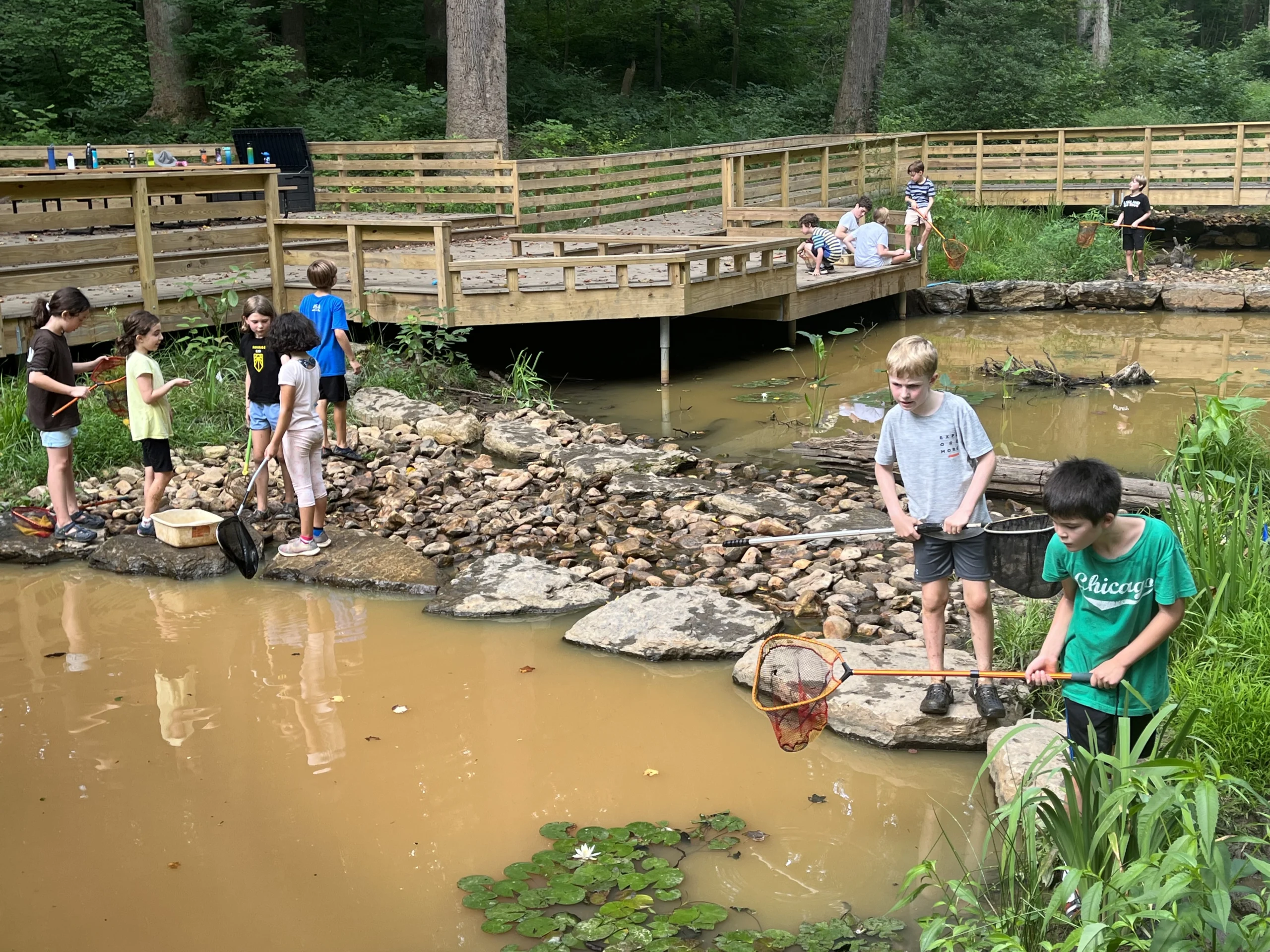Nature Forward worked with the Center for Watershed Protection (CWP) to design a step pool system along 1,500 feet of what had been a perennial, spring-fed stream into the 1970s, but over time had become a deeply eroded ephemeral channel at Woodend Nature Sanctuary. After the restoration implemented by Stormwater Maintenance, LLC (SMC), 44 step pools now stabilize the banks of the stream to slow stormwater, restore base flow, and interrupt downstream pollution.
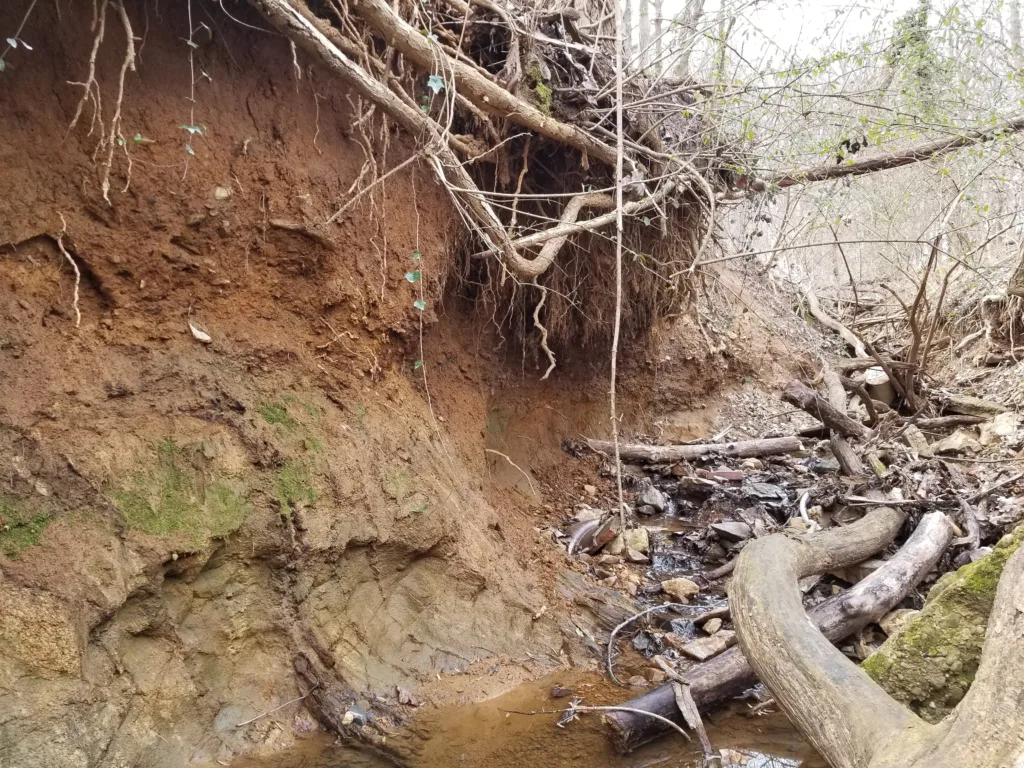
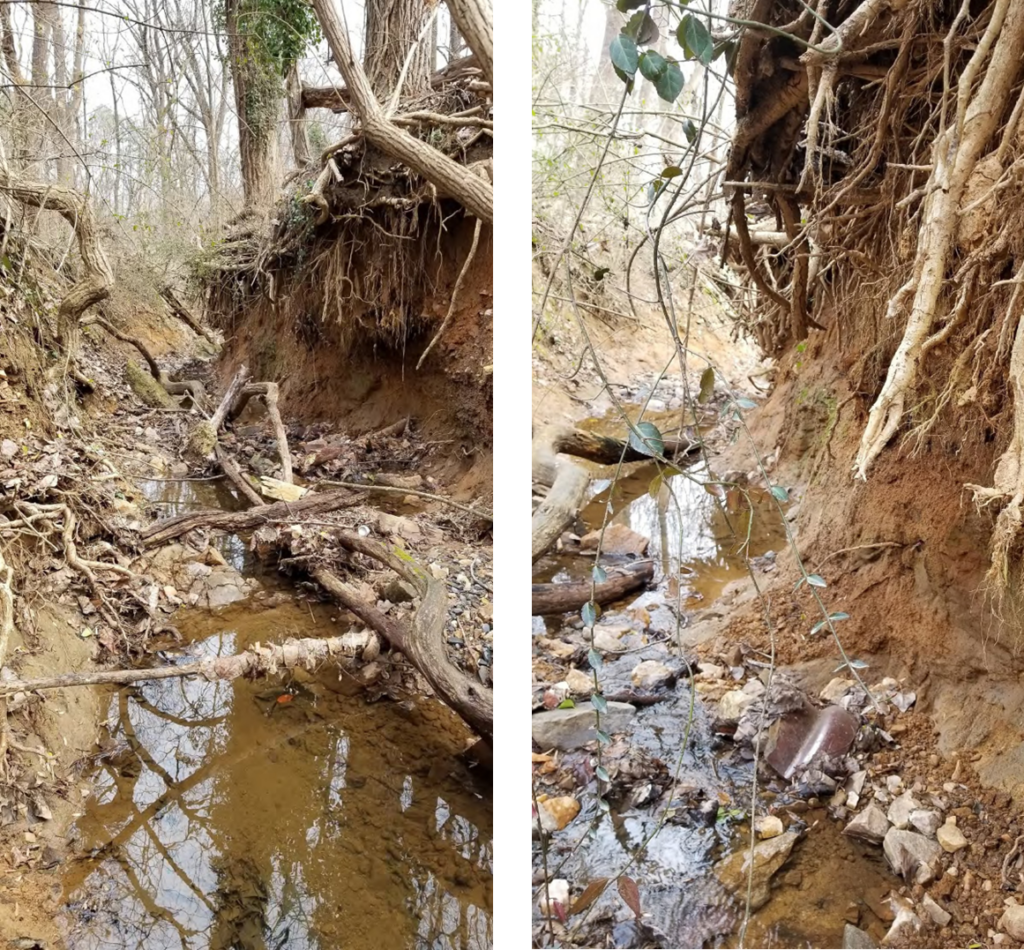
The step pools raised the elevation of the deeply incised stream bed, connecting to the surrounding grade and back into the existing floodplain. The practice fully captures a 10-year storm and will remain stable even faced with the energy of a 100-year storm, without having expanded or redirected the floodplain. The project was constructed in 2020–2021, since which time there have been multiple intensive storm events with five or more inches of rain in 24 hours, with no failures in the system. The total drainage area for the stream is 38 acres, of which 4 acres are impervious. Engineering calculations show an annual reduction of 56.6 pounds of nitrogen, 7.2 pounds of phosphorus, and 12.4 tons of sediment, resulting in benefits for Rock Creek and the Chesapeake Bay.
The thoughtful design minimized tree loss and overall site disturbance, while maximizing benefits for wildlife and sanctuary visitors. The step pools have greatly increased available habitat for aquatic macroinvertebrates and amphibians, which are now abundant in each pool. Summer campers even experienced a mass larval emergence of dragonflies! A diverse, native riparian buffer now provides wildlife with food sources like serviceberries, while visitors enjoy blooms like mountain mint and woodland sunflower. The project improved public access and educational infrastructure for people of all abilities with a stormwater- permeable, wheelchair-accessible nature trail, a complex of accessible boardwalks around a 4,400 square foot in-line pond, and weirs that double as stream crossings.
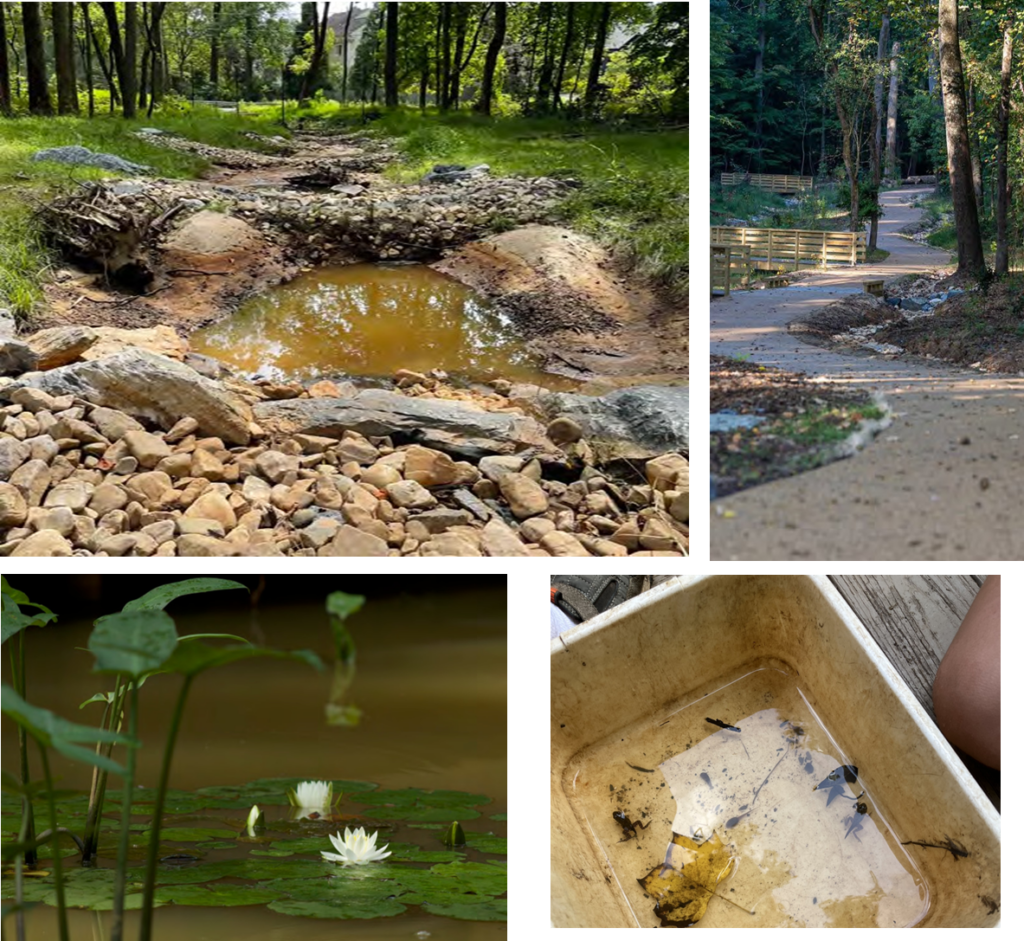
Planning for this stream restoration began in 2015, when Nature Forward (then Audubon Naturalist Society) conducted a year-long master planning process in which members, staff, partners and neighbors identified habitat improvement as their top priority for Woodend and stream restoration as a key measure for ecological uplift. Resources managers from MD-DNR, the Montgomery County DEP, and Montgomery Parks provided guidance on the approach to restoration design and Master Naturalist volunteers documented the degraded condition of the stream. Nature Forward worked closely with neighbors whose properties abut the stream to ensure that they understood the goals of the project and what the process would entail.
This stream restoration is a demonstration project that will inspire, train and teach others to take similar actions in their communities. Woodend Nature Sanctuary, just inside the DC Beltway north of Washington, DC, is open to the public and welcomes tens of thousands of visitors annually from school children to adults in workshops to families out for a walk. Since the project completion in August of 2021, we have hosted approximately 1,600 people on tours of the restoration efforts, including environmental professionals such as the Director of the EPA’s Chesapeake Bay Program, members of the Stormwater Partners Network and Choose Clean Water Coalition, employees of World Wildlife Fund and trainees in the Chesapeake Bay Landscape Professionals program. Nature Forward is currently finalizing designs for bilingual interpretive signs about habitats and the stream restoration itself. We also created a Guide to Woodend Restoration available on our website.
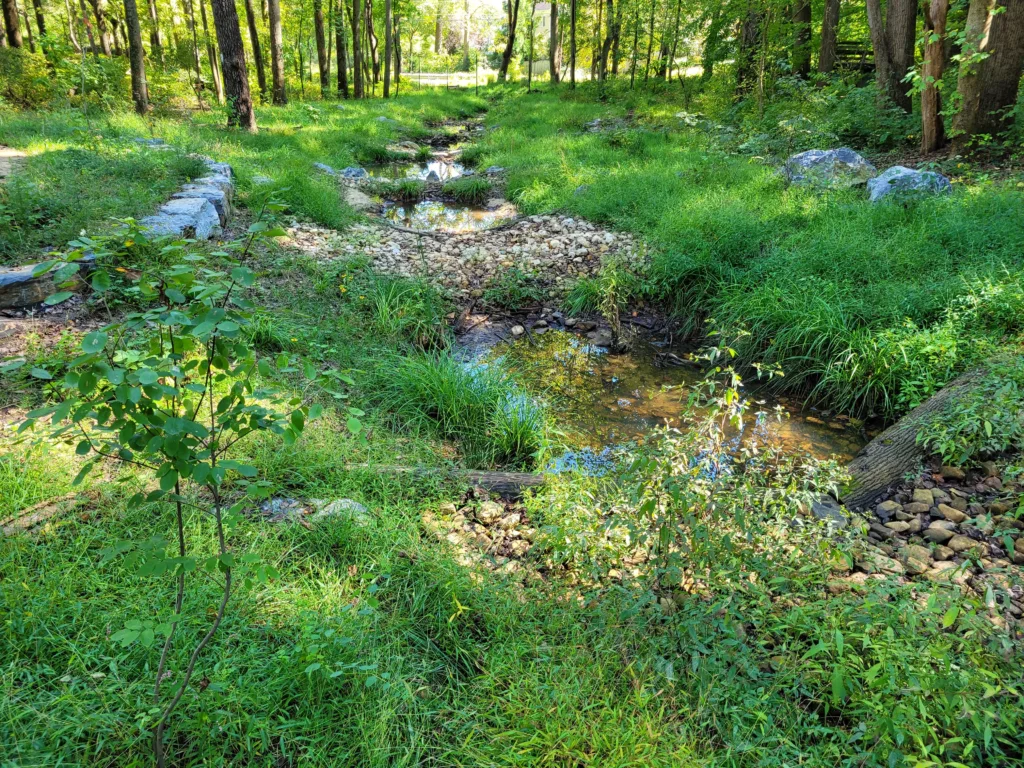
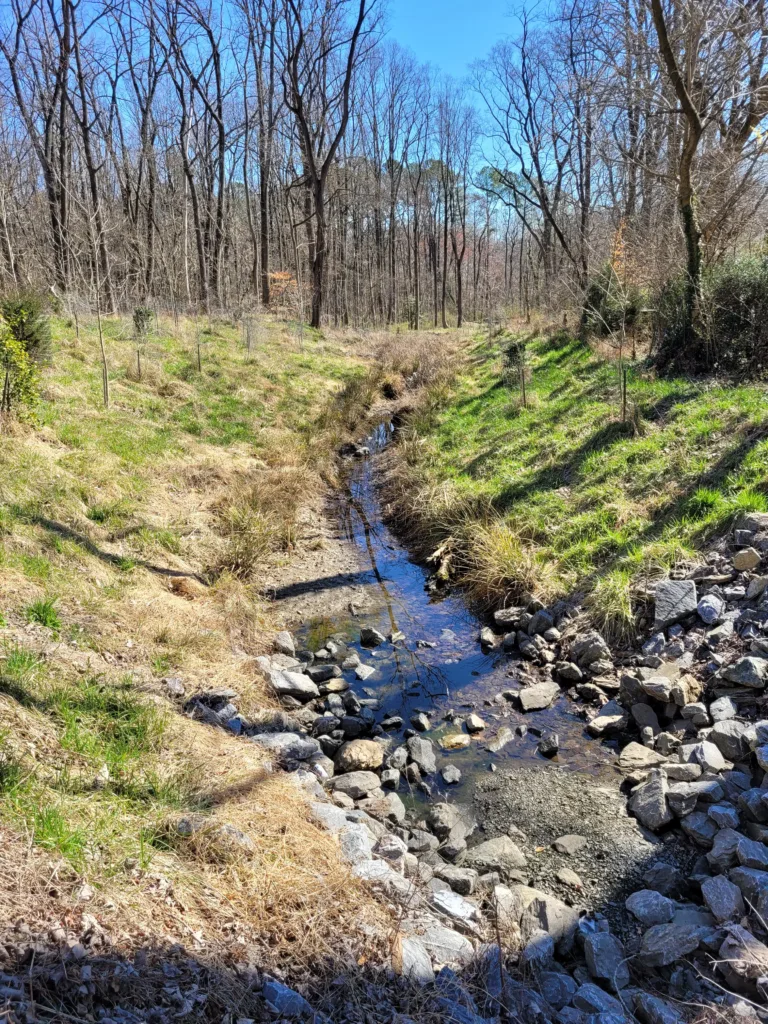
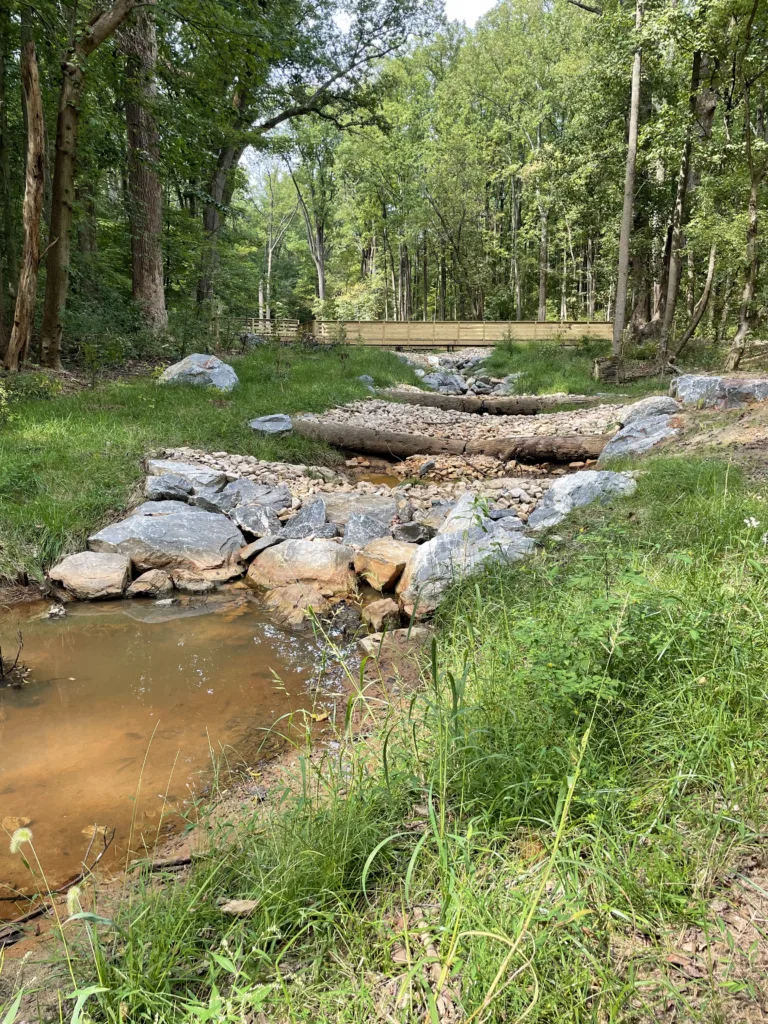
The site conditions at Woodend and Nature Forward’s priorities required thoughtful environmental site design and close coordination among the project team. Foremost among the environmental concerns was maintaining a healthy tree stand. Given its slope and intermittent nature, the stream was an excellent candidate for a step pool stormwater conveyance practice to stabilize the eroded stream banks, provide much-needed stormwater treatment, and enhance aquatic and riparian habitats. Boulders, sand, and gravel were brought in to shape the carefully designed pool and riffle sequence, and to ensure stable conveyance. Attractive imbricated stone showcases the restoration in public areas, while less expensive stone was used in a less public reach of the stream. Log weirs and vanes made from fallen trees (or those that could not be preserved during construction) were used to create elevation drops in the stream instead of boulders whenever possible, for about half of the structures. Large root balls from these trees were added to pools to provide habitat for amphibians and macroinvertebrates. Plantings of hundreds of native trees and shrubs and thousands of herbaceous perennials stabilized the banks and floodplain, and restored the natural forest ecosystem.
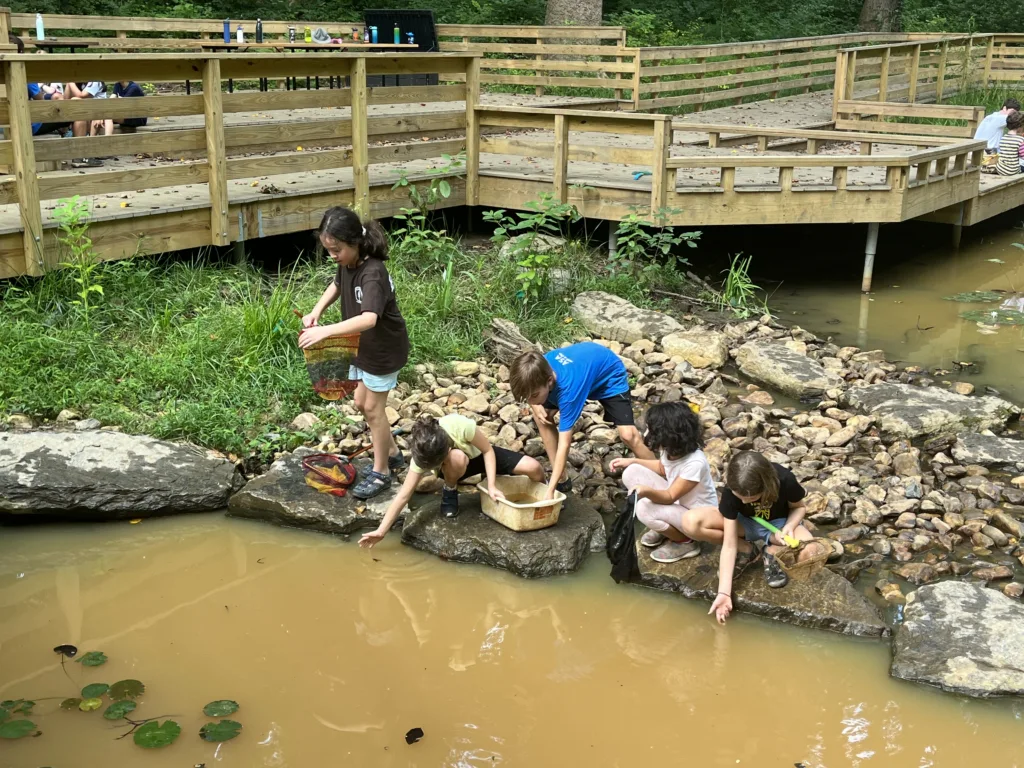
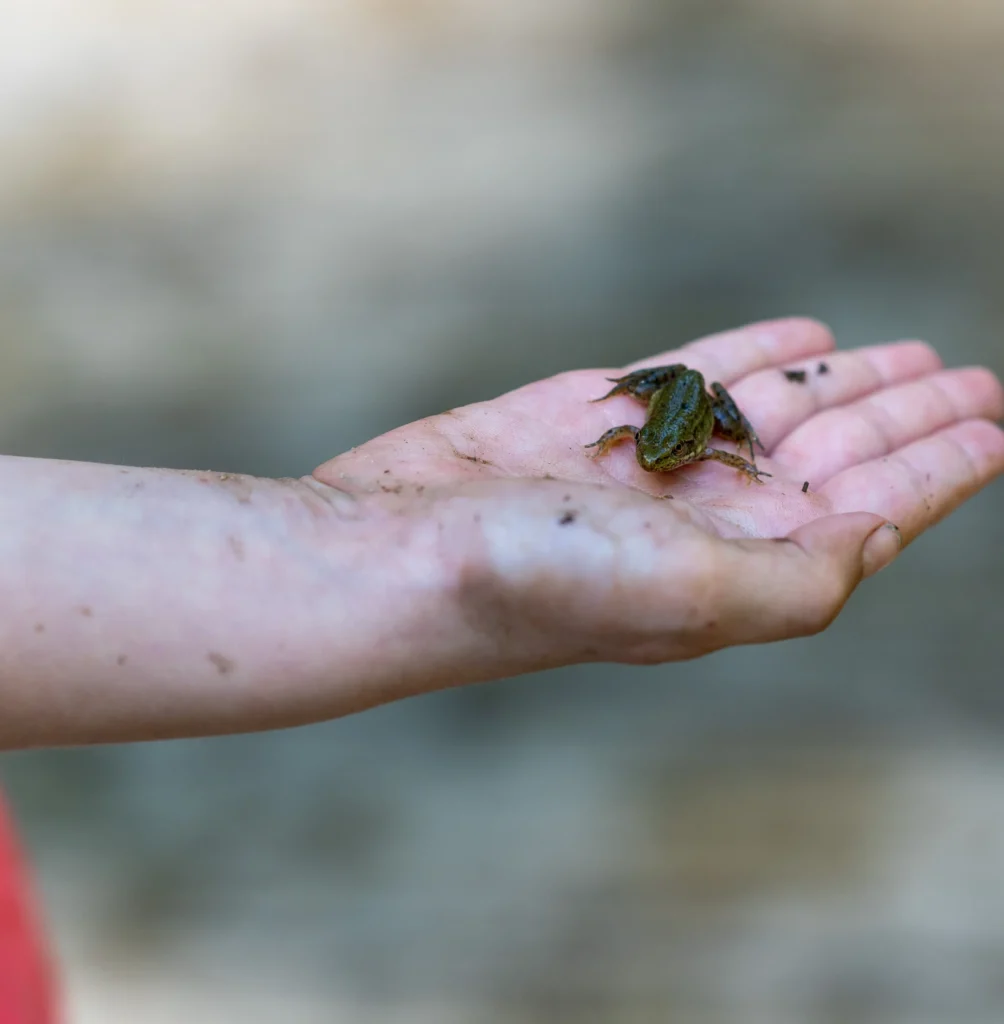
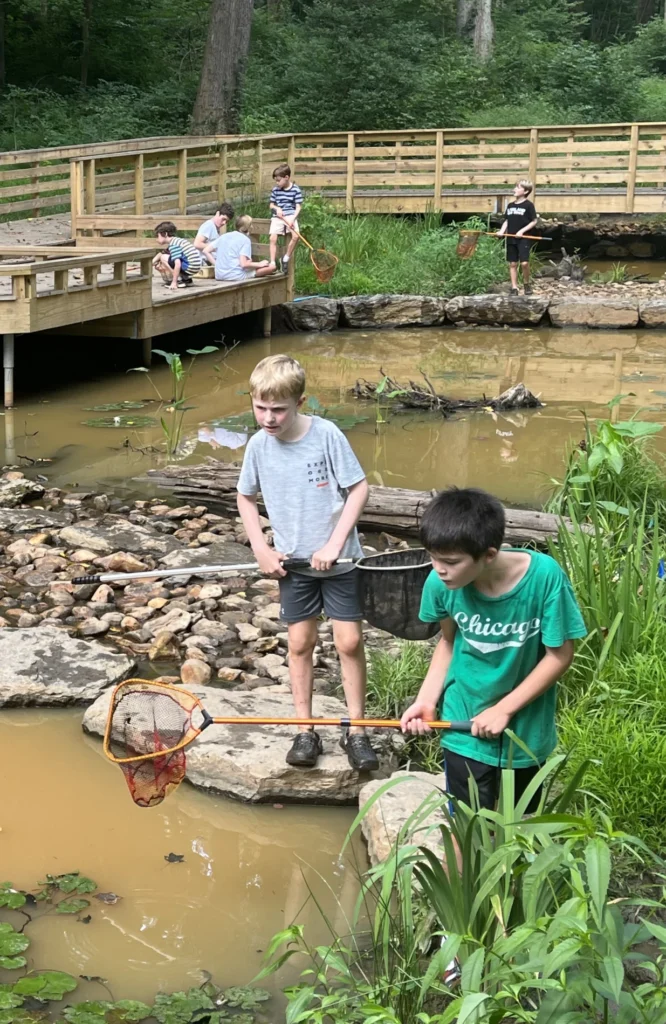
The restoration includes four distinct yet connected sections, each of which presented unique opportunities and challenges:
- Early in the design process we omitted the uppermost reach of the stream bed from the project scope to avoid the loss of mature tulip poplars. Instead, the practice begins at an historic spring protection structure that was preserved and incorporated into the first pool at the upstream end of the practice.
- An existing pond was reconstructed as three expanded step pools with traversable stone weirs between and wetland habitat surrounding. Boardwalks with platforms for dip netting were integrated into the pond using helical pile supports. Stormwater engineers worked closely with landscape architects to plan a pond complex that was safe and large enough for classes of school children and campers to explore the newly created habitat.
- There was limited room to both design and construct the portion of the practice situated between the pond and Jones Mill Road, in an area without a streamside path (or haul road). The team worked hard to preserve the adjacent trees in this narrow area.
- The project had to address a severe head cut below the culvert under Jones Mill Road. In this reach of the stream, Nature Forward only owns a thin strip of property between the stream and residential housing to the south. With restraints on all sides, the engineering team had to carefully design elevations and pool sizes to arrest the erosion, safely discharge the water from upstream, and ensure safe conveyance of the water at the end of the project limits.
The degraded condition of the stream reflected the land use history of the larger area that is impacting many first order streams. Intensive farming of tobacco had stripped soil layers from the surrounding hills and deposited legacy sediment along the stream. With surrounding urbanization and increasingly intense storms, erosion of that sediment formed canyons that undermined tree roots and became a source of pollution downstream. Ultimately, the small stream became disconnected from its floodplain, resulting in an ephemeral channel for rushing stormwater. This project shows how that destructive history can be remediated in a way that benefits people and wildlife both on-site and downstream. The work resulted in restored base flow, moderation of peak discharges from high-frequency stormwater events, and a stable stream channel that experiences no net aggradation or degradation over time. The project reduced transport of pollutants into Rock Creek and supports a self-sustaining, diverse aquatic community. A permeable gravel trail constructed in the haul road eliminates the impact of former trail erosion and provides access for people of all abilities to experience Woodend Nature Sanctuary’s forest, meadow, pond, and stream habitats.
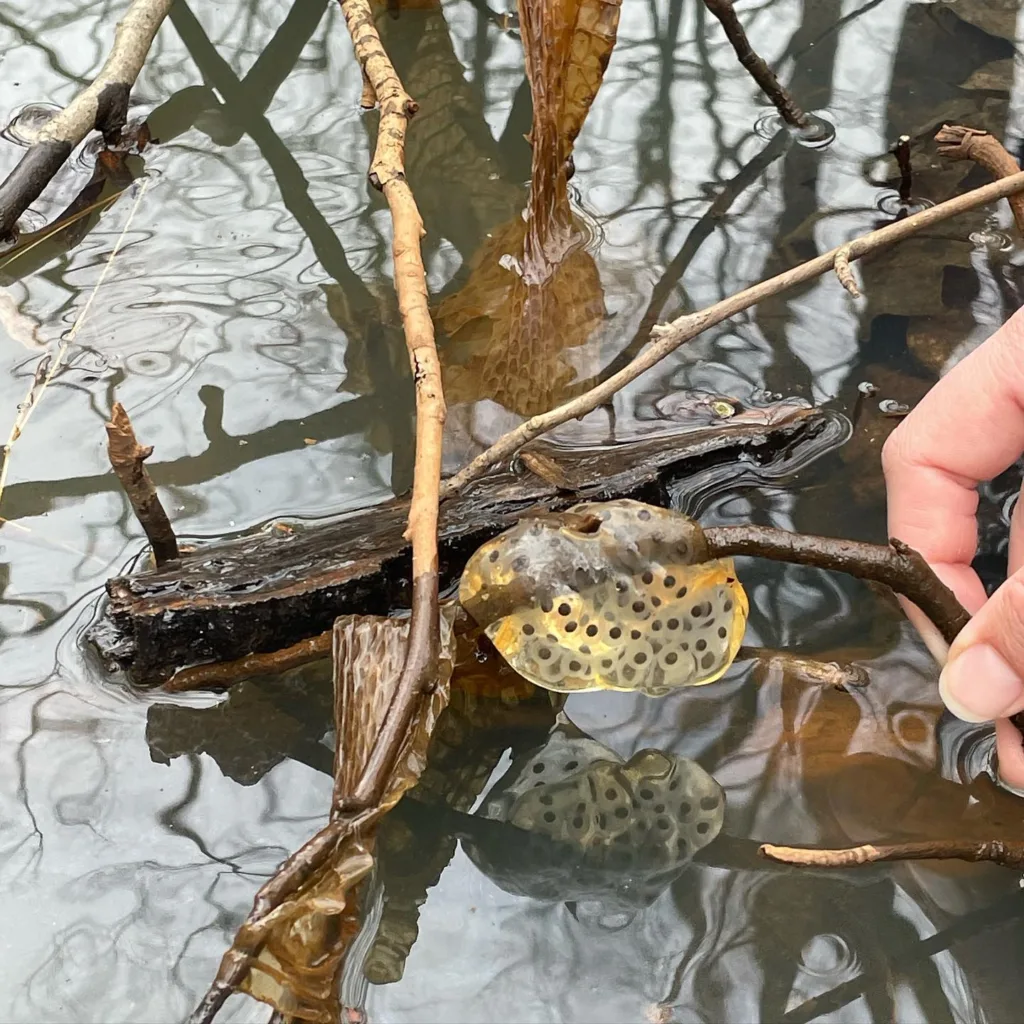
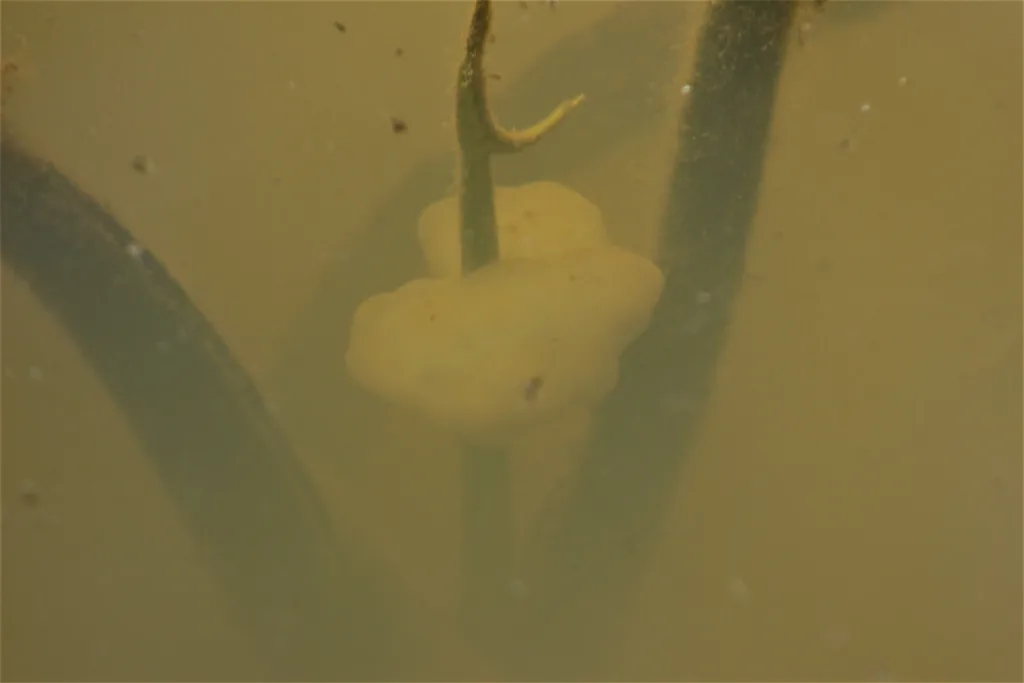
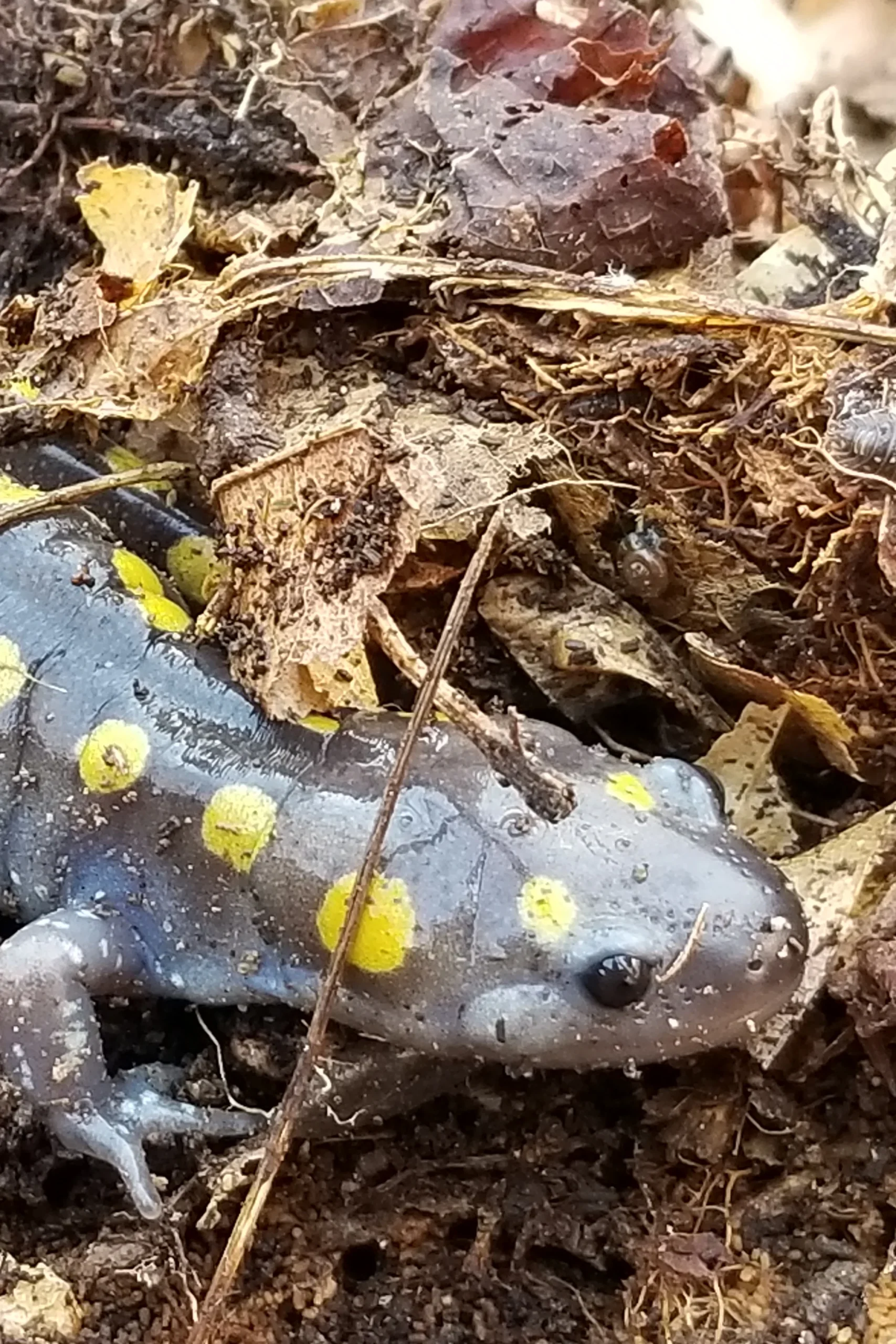
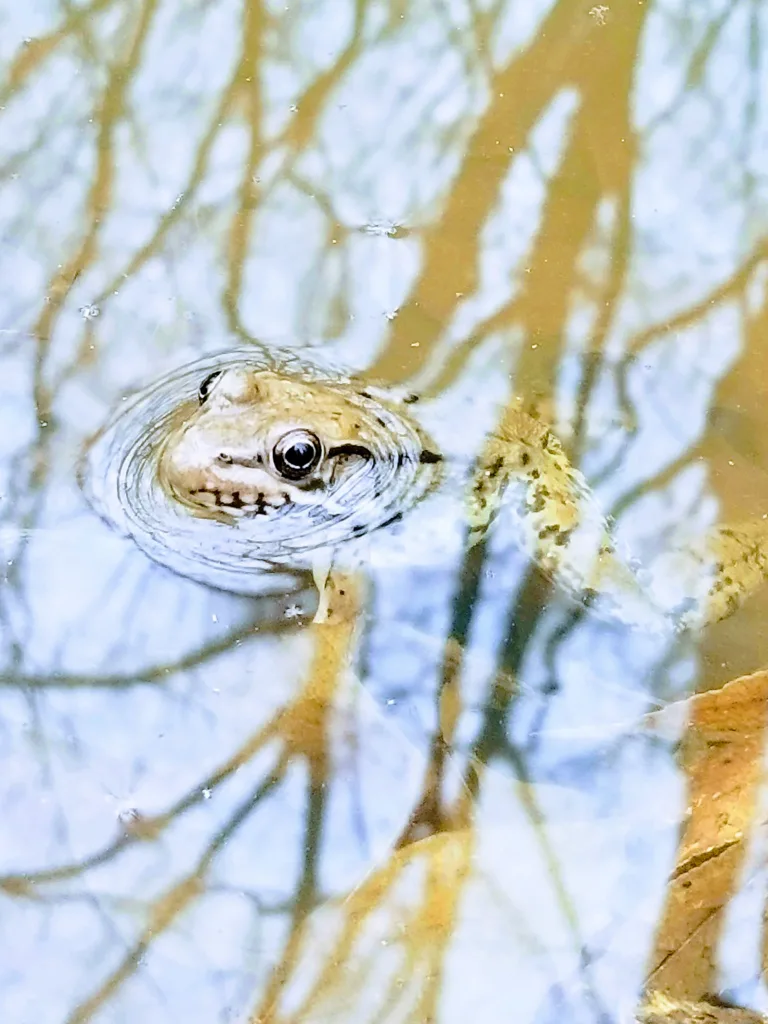
Nature Forward will continue to use the stream restoration in its outreach about best land management practices, will steward the long term health of the riparian corridor through invasive plant management, and will monitor the step pools themselves. A macroinvertebrate survey in the pond in 2019 before restoration resulted in an IBI score of 1.57, indicating poor water quality. Resampling in 2023 resulted in similar species diversity, though more abundant populations given the increase in available habitat. It is gratifying to see that the restoration process did not negatively impact the aquatic invertebrate population and we hope that, with time, it will even improve. The project team also hopes this restoration will serve as a living laboratory for other stream stabilization projects.

